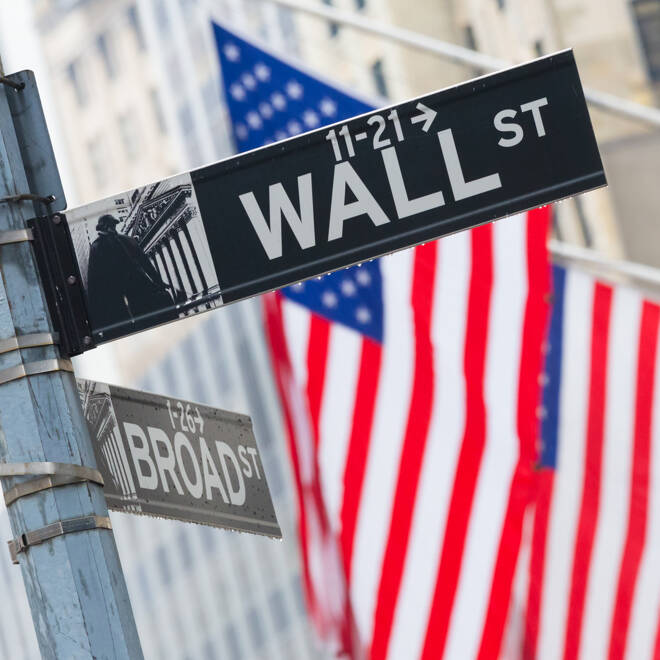Advertisement
Advertisement
Broad-Based S&P 500 Moves Higher for Year, but Rally Hasn’t Been ‘Broad-Based’
By:
For every stock that has advanced on the S&P 500 this year, 1.7 have declined.
The major U.S. stock indexes finished mixed on Tuesday, with the technology-based NASDAQ Composite succumbing to a late-session sell-off. If you’re keeping score, the benchmark S&P 500 Index is now positive for the year, however, the internals suggest some problems with its individual sectors.
After spending months digging out of the whole created by the shortest bear market in history in March, the index is up 0.8% on the year and at its highest level since February 21, which puts it just slightly below its all-time high.
In the cash market on Tuesday, the S&P 500 Index settled at 3257.30, up 5.46 or +0.18%.
Where Has Investor Money Been Going?
For every stock that has advanced on the S&P 500 this year, 1.7 have declined, according to Michael O’Rourke, chief market strategist at JonesTrading in Greenwich, Connecticut. That is partially because investors have gravitated to a small group of tech-related stocks they believe have the best chance of delivering steady profits in a climate fraught with uncertainty over the coronavirus pandemic and its economic fallout.
The five most valuable S&P 500 companies – Apple Inc, Microsoft Corp, Amazon.com Inc, Alphabet Inc and Facebook Inc – account for some 23% of the index’s market capitalization, the highest level on record, according to Goldman Sachs, Reuters reported.
“It’s hard to imagine the index going up if you lose that leadership,” said Robert Phipps, director at Per Stirling in Austin, Texas. “Most of the market is really not participating here.”
Tech-Related Sectors Outperforming Other Sectors by Significant Margins
According to Reuters, tech-related sectors to which those aforementioned stocks belong, have outperformed other sectors by significant margins this year. The technology index, which includes Apple and Microsoft, has climbed about 18%, while consumer discretionary index, which includes Amazon, has jumped 15%. The communications services index, which includes Alphabet and Facebook, has risen nearly 6%.
Only one other sector, healthcare, has had year-to-day gains.
Flight to Large-Cap, Tech-Related Companies Reflects Caution Rather than Euphoria
While U.S. equity valuations stand at their highest level since the dot-com boom nearly 20 years ago, “the flight to large-cap, tech-related companies reflects caution rather than euphoria,” said Quincy Krosby, chief market strategist at Prudential Financial in Newark, New Jersey.
“Moreover, the top five S&P 500 companies today have the greater share of the index’s earnings and trade at a lower multiple than the top five companies in 2000 did,” Jonathan Golub, chief U.S. equity strategist at Credit Suisse, wrote in a research note on Tuesday.
According to Reuters, given their relatively strong balance sheets and steadier revenue streams, many investors believe large-cap, tech-related companies are better positioned to withstand the economic pressures resulting from the novel coronavirus pandemic.
Conclusion
The huge rally since March 23 has created the illusion that all the stocks in the S&P 500 Index are moving higher. This is the illusion of “all ships rise with the tide” that is often present during the latter stages of a bull market.
However, this current rally is completely different. This is because the economy is in the middle of the worst pandemic in a hundred years and there is uncertainty over how and when it will fully recover from the damage inflicted by the coronavirus.
Don’t be fooled that the strength of the rally is being driven by broad-based buying. Professionals are buying strong companies. They are not guessing and betting on high-flying experimental technology stocks. They are putting their money in proven profitable companies.
For a look at all of today’s economic events, check out our economic calendar.
About the Author
James Hyerczykauthor
James Hyerczyk is a U.S. based seasoned technical analyst and educator with over 40 years of experience in market analysis and trading, specializing in chart patterns and price movement. He is the author of two books on technical analysis and has a background in both futures and stock markets.
Advertisement
